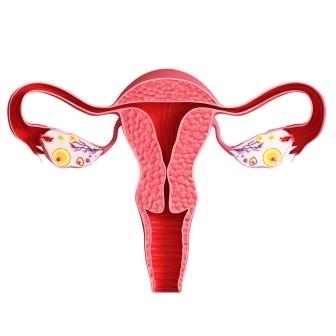Ovarian cancer
Symptoms and causes
Symptoms and causes
What is ovarian cancer?
The uterus, vagina (vulva), ovaries and fallopian tubes belong to the woman's internal genitalia. They are located in the lower part of the abdominal cavity (the small pelvis). The small and large labia, the clitoris and the entrance to the vagina are part of the external genitalia.
The ovaries are the organ in which the eggs are stored. The egg can reach the uterus through the fallopian tubes.
Depending on the type of tissue where the tumour originates, we distinguish three main types of ovarian cancer:
- The tumour originates from cells that cover the ovaries: the epithelial cells. In this case, we talk about an epithelial ovarian tumour or adenocarcinoma.
- The tumour originates from the cells that produce hormones: the stroma cells. We call this a gonadal stramal tumour.
- The tumour originates from unripe egg cells that mature or are lost over time: the stem cells. We call this a stem cell tumour.
Symptoms
Ovarian cancer often goes unnoticed because the disease causes little or no symptoms at an early stage. A bloated abdomen and constipation may be initial symptoms.
Diagnosis and treatment
Diagnosis and treatmentTreatment
Treatment of ovarian cancer depends on the extent of the disease and the general condition of the patient. The treatment may consist of:
The attending physician may ask a patient to participate in scientific research (also called a clinical study or trial). In clinical trials, physicians test whether a new drug or treatment is safe and produces better results than existing treatments. However, a patient will only participate if he or she provides his or her express consent.
Treatment centres and specialisations
Treatment centres and specialisations
Latest publication date: 02/08/2024
Supervising author: Dr. Verschueren Eva
Something wrong or unclear on this page? Report it.
Supervising author: Dr. Verschueren Eva











